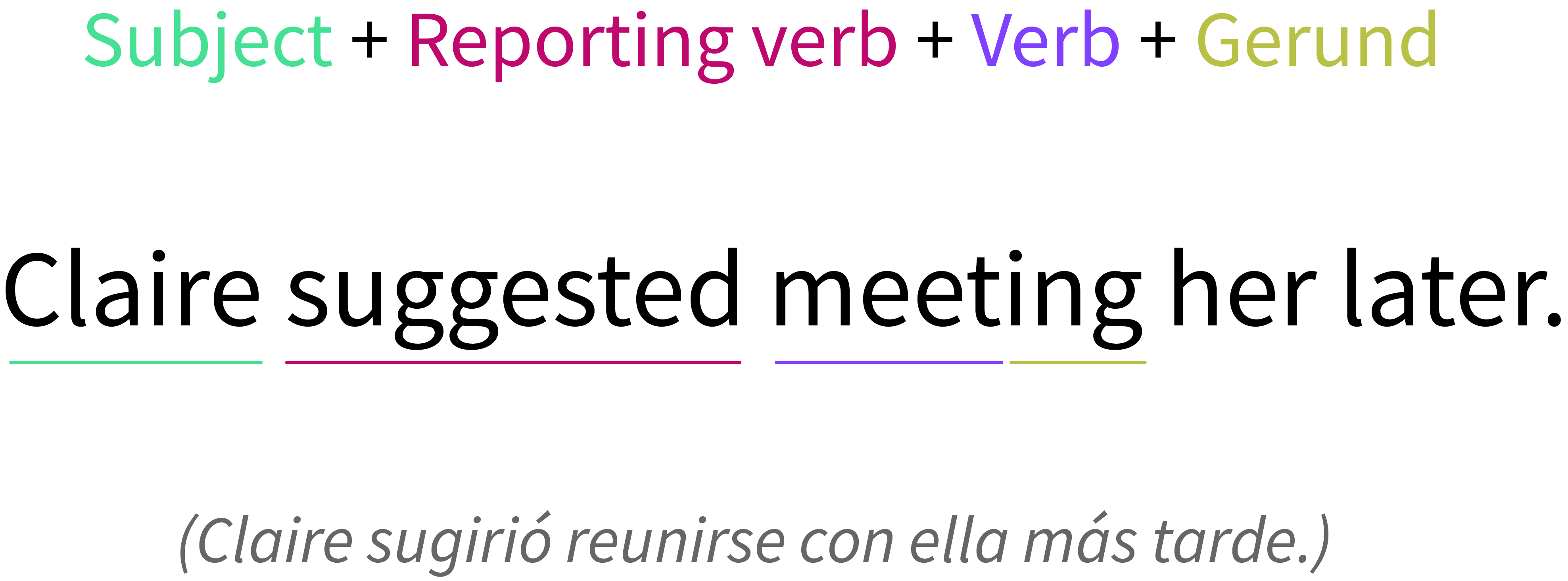
Reporting speech verbs
How do you talk about what another person said to you? Well, it is not gossip. The formal name of that is reporting speech.
To do it, we use reporting verbs. The most common are say and tell in their past forms: said and told. Most of the other verbs used in reported speech follow the pattern of these two. Let's see how they work:
Say pattern:
Usually, if we use say for direct speech, we don't mention the person being spoken. It is the same rule for the case of impersonal speech:
- Direct speech: "They are going to get married," William said.
- Indirect speech: William said that you are getting married
Some verbs that follow the say pattern include advised, agreed, announced, claimed, complained, confirmed, declared, explained, insisted, mentioned, promised, proposed, suggested, and warned.
Tell pattern:
On the other hand, when we use tell we always have to use an indirect object. We must specify who said something.
You can employ the tell pattern with the following reporting verbs: Advised, assured, convinced, informed, notified, persuaded, promised, reassured, reminded, and warned.
- Direct speech: "Everything is going to be okay," she told me.
- Indirect speech: She told me that everything is going to be okay.
There are different ways to compose a sentence using a reporting verb:
1. With a gerund
In this case, the main verb of the sentence is conjugated with the gerund -ing.
Some reporting verbs used with this type of conjugation include admitted, denied, mentioned, proposed, reported, and suggested.

2. With an indirect object
In this case, the sentence specifies to whom what the other person said.

3. With an infinitive verb
Reporting verbs used with this type of conjugation include agreed, asked, demanded, offered, promised, proposed, refused, threatened, advised, begged, encouraged, forbade, instructed, invited, reminded, told, and warned.

4. With an indirect object and an infinitive verb
Combining both forms, with an infinitive verb and an indirect object, you can employ the following structure:







